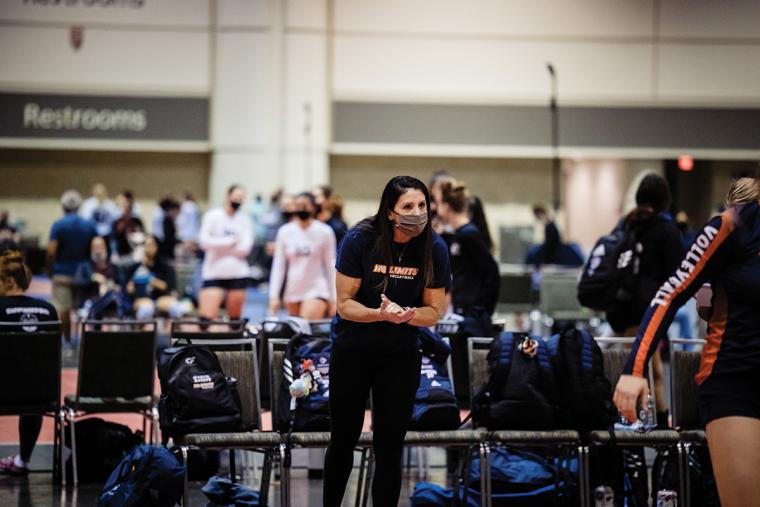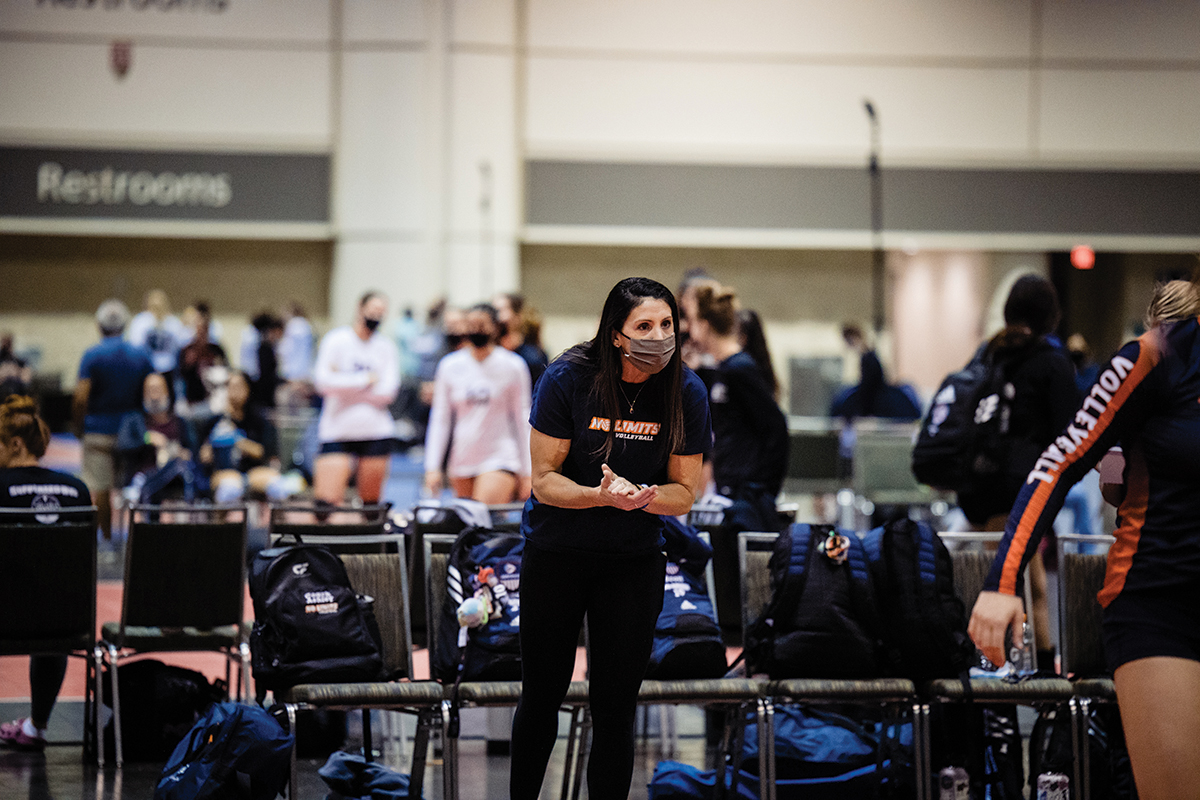

The underlying message is the same: While everything did, in fact, stop abruptly in March of 2020, not everything restarts the same way. Still, there are plenty of indicators that recovery is, in fact, underway, and that sports are helping to lead the charge into this bright, new and much anticipated post-vaccination economy.
The road map is set, and the route is in motion. Our signposts along the way have been varied – and they are all valid. Here’s what we know:
Travel is Trending Up
Back in mid-March, we saw travel start to trend up again. TSA reported screening more than 1.3 million people, the highest since COVID hit in 2020. And while the agency reported having seen travel ticking upwards on holidays, only to drop back down again, this was the first legitimate sign of a trend. (The fact that the dates align with spring break was considered, but discarded, by travel experts). Accordingly, stock in airlines shot up as well, with the four largest domestic carriers recording their highest stock prices in more than a year.
A Summer of Sports is Ahead
One of the most visibly encouraging signs has been the resurgence of syndicated youth tournaments nationwide. One example is Warrior Soccer, offering tournaments in multiple formats, including 3v3, 5v5, 7v7 and full-sided, along with camps and hybrid tournaments that combine multiple formats.
Warrior had, at last check-in, a total of 65 tournaments on the roster, with the bulk of these coming during the summer months. And it’s not just the youth market that is hungry for tournament action, according to Travis Tew, Warrior’s founder.
“Right now, there are a lot of adults playing 7v7. They love being able to play again and the 7v7 format is easy for them. It’s a huge, underserved market that I’d like to capitalize on. In Panama City Beach, we had more than 20 adult teams registered. I think that’s something we’ll be targeting a little more. The 7v7 concept is great for adults because it’s easy to find seven people and it takes up less space, so they don’t have to run as much. Right now, it’s still a minority – maybe five percent of our teams are adults, but you have to remember that soccer kids who love the game will grow up and want to continue to play. This is a way of helping them do that.”
Ripken Baseball, another youth-centered event owner, is also back in a big way. The organization is offering a whopping 191 events in destinations including Myrtle Beach, South Carolina; Pigeon Forge, Tennessee; Round Rock, Texas and Orlando, Florida – as well as in Aberdeen, Maryland, Cal Ripken’s hometown. Most are hosted at The Ripken Experience, a group of high-end sports complexes – and events include big league touches, such as walk-up music and player announcements – as well as appearances by former MLB players (Cal and Bill Ripken are fixtures but the Round Rock event, for example, includes Nolan Ryan).
“We’re always focused on innovation and making our events a true and welcome experience for the entire family,” says Jon Rowland, senior manager of marketing and analytics.
The pent-up demand for tournaments is easy to see: the Ripken Baseball site shows many tournaments as already sold out and waitlisting teams. By mid-April, the organization added a number of 12U events in various destinations.
Of course, no review of the rebound is complete without paying homage to AAU – which was, after all, the first event owner to go out on a limb during the summer of 2020 and offer a large-scale tournament, the AAU Junior National Volleyball Championships, which played out at the Orange County Convention Center in Orlando.
“We started calling our director of sales the Grim Reaper for a while because everything was being called off,” notes Mark Tester, executive director of the Orange County Convention Center. After a while, we decided we couldn’t live with it. We wanted to host and then AAU basically raised their hand and said, “We’ll do this.” And suddenly, our conversation was about return and recovery guidelines.”
Starting from a baseline was difficult, recalls Jason Siegel, president and CEO of the Greater Orlando Sports Commission, but the organization pressed forward.
“COVID really wiped the calendar clean for the first month. Around June and July, we started seeing things return. Then the question became, “How far out can we push this event and still have it?” It was like playing Tetris – the blocks kept moving. The game kept going as the blocks kept moving and we were trying to keep up.”
Ultimately, the tournament went on later than usual (in mid-July rather than around mid-June) and with fewer teams than would normally be expected – but it went on, and that was a victory in itself. This year, AAU is making up for lost time with not only the Junior Nationals but a plethora of other tournaments – basketball, baseball, softball, volleyball, track and field, sport stacking, cheer and dance, wrestling – and another showpiece event, the AAU Junior Olympics (which will be held July 28-August 7 in Houston).
Nudging the decision of youth athletes and their parents to sign up for national tournaments is the additional carrot on a stick – the concept of being seen by college, or even pro, scouts. Having lost playing time last summer (and with many school seasons having been cancelled), tournaments, showcases, combines and camps are taking on new significance and, in some cases, new urgency. Count on this to continue to drive participation throughout this year and 2022 as well.
Hotel Use Projections Are Positive
And as the summer of sports (and spectators, in many cases) gets underway, industry analysts are predicting a corresponding spike in hotel occupancy. According to CBRE Hotels Research, around the third quarter of 2021, we should start seeing a return to the occupancy rates of 2019. CBRE is also predicting hotel properties that operate in the lower-priced chain-scale segments will recover to 2019 performance levels sooner than the higher-priced hotels. That, in turn, could help with the employment situation in the hospitality industry where many jobs, including housekeeping, have been lost. (Another sector that can benefit will be the restaurant industry, at least in areas where tournaments will be landing).
And still there are more indicators of recovery.
New Sports Venues are Coming Online
Many sports complexes were already in the pipeline prior to lockdown. As a result, many new or renovated facilities are fully open, some are partially open, some are planning their grand opening – and others are still under construction with an eye to opening soon. Here is a sampling from around the country:
Arizona: Legacy Sports Park, a $250 million, 320-acre privately owned sports and entertainment facility in Mesa, is expected to feature 24 soccer fields, 62 indoor volleyball courts, 40 pickleball courts, 15 indoor basketball courts, eight baseball and softball fields, a 75,000-square-foot esports arena, and a 50,000-square-foot arena for gymnastics, cheerleading and dance, as well as other amenities.
Illinois: Surge, a $30 million esports arena in Chicago near McCormick Place, will feature an enormous video screen and suite areas for spectators. The 108,000-square-foot venue will also feature its own restaurant and a player lounge. Construction could begin as soon as this summer.
Louisiana: A $30 million project that was years in the planning stages is expected to get underway in 2021 in West Jefferson. When completed in 2022, the 94-acre complex will include batting cages, a playground, a shaded pavilion, two baseball fields and five multi-purpose fields for baseball, softball, flag football and soccer.
Tennessee: In March, the City of Morristown, Tennessee celebrated the groundbreaking of its newest recreation and events venue, Morristown Landing. The 100,000 square-foot indoor recreation, wellness, and events venue is slated to be completed by summer 2022. Morristown Landing, which will be managed by Sports Facilities Company (SFC), will feature a 25-yard, six-lane lap pool, family aquatic center, fitness center, a fieldhouse with four hardwood basketball or six volleyball courts, climbing walls, meeting and event spaces and an outdoor splash pad.
Texas: A planned addition to the Sports Complex at Shadow Creek Ranch in Pearland is expected to accommodate cricket and rugby, as well as provide a new multi-purpose field for athletes with disabilities, according to local officials. The $10 million project also will include a 4,300-square-foot concession building, locker rooms, restroom facilities and huddle rooms, a 2,200-square-foot maintenance building and 250 additional parking spaces. Phase One is expected to be completed late this year while the second phase, with new sports fields, will be completed in spring 2022.
Washington: The Podium, a $53 million, 135,000-square-foot complex in Spokane, will feature a 200-meter banked hydraulic track, basketball and volleyball courts, wrestling mats and spectator seating for up to 4,000.
Wisconsin: A new indoor sports facility in Franklin (near Milwaukee) offers a full football field (and can host soccer as well) and is the latest addition to the Rock Sports Complex.
Lessons Learned
The pandemic has taught us that our industry is not as bulletproof as we thought, and it would be hard to find any sector that has not been damaged by it. But out of this dark time, some important lessons have emerged.
In many cases, we have a better understanding of the ways technology can supplement and enrich our events. Running event owners and rights holders say they’ll continue to offer virtual options whenever possible to allow for expanded participation and to create an additional revenue stream. Cheer and dance squads may be able to use virtual tryout methods for those living at a distance and unable to travel. Many event owners have aligned themselves with various platforms that allow student athletes to connect with, and showcase their skills to college coaches. Oh – and we value now, more than ever, the crews that keep our venues, our hotels and our restaurants clean and safe.
But the good news, the best news, is that we are, in fact, finally emerging from what has surely been the hardest and most grueling period in our industry, at least in recent memory. The pandemic is in the rear-view and we’re driving forward. The signs are positive, the sky is brighter and we’re looking forward to this summer like the kids who can’t wait to get out of real, in-person school. SDM


